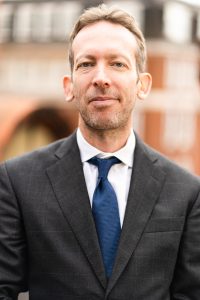
Institution profile
Heptagon Capital is a private investment firm with $14.4 billion AUM and advice, founded in 2005. The firm partners with a range of asset managers as well as manging funds in-house (including the Future Trends and European Focus Equity Funds) as well as discretionary mandates. The firm has offices in Dubai, London, Malta, Stockholm and Tel-Aviv.
Biography
Alexander Gunz is a Fund Manager at Heptagon Capital, having joined in 2011. His primary responsibility is managing the Heptagon Future Trends strategy. Along with regular thematic articles, Alex also produces the Future Trends blog and writes Heptagon’s monthly View From The Top macro commentary. Alex started his financial career in 1997, holding senior roles at J.P. Morgan and Friedman Billings and Ramsey, after earlier positions at Hoare Govett and Credit Suisse, where he became a top-ranked analyst. Alex has a BA in PPE from the University of Oxford and a Master’s in English Literature from Queen Mary College, University of London.
The heptagon Future Trends Fund can invest globally, what’s the geographic split?
Roughly 80% US today, 20% European by listing. The important caveat here is that where a company is listed means very little. The businesses we invest in are typically global. For example, we’ve owned Novo Nordisk and MasterCard since the inception of the fund. Novo Nordisk is headquartered in Denmark, but they get less than 1% of their revenues from Denmark. (The US and China are their two largest end markets). And MasterCard is listed in the US but operates pretty much in every geography in the world.
Discuss your investment style.
We look for businesses exposed to long term future trends. A trend that will grow in importance regardless of what’s happening to global GDP and where regulation or government intervention, if present, are tailwinds rather than headwinds. Then we look for the best business within that thematic area – pure play businesses, that have dominant market positions, and that market leadership is sustained by some form of competitive advantage or moat. We put a lot of emphasis on innovation and R&D. What is R&D as a percentage of revenues and what businesses are doing to attract and retain the best personnel?
The winning formula, is to identify high quality, sustainably oriented management teams that over allocate to innovation (organically or via judicious M&A) so that innovation drives market leadership. Market leadership drives free cash flow generation, which is the key financial metric for us. And that free cash flow enables continued innovation.
Does the Future Trends Fund mean you are heavily swayed to AI?
This is a multi thematic fund, not an AI fund. We invest in in everything from cloud to wind and fish to chips.
Which screens do you use?
Firstly, this is an Article 8 fund, so we have a very clear set of exclusions (weapons, gambling, alcohol, tobacco, oil, mining, nuclear etc). Renewable and food innovation are themes we are keen on. Xylem is a holding due to its exposure to water and MasterCard, another given its exposure to financial inclusion. These themes naturally align with the UN Sustainable Development Goals.
Secondly, we do not own loss making businesses. In my many years in financial services, I’ve learned that #1 you have to separate hype from reality and #2 only businesses that generate free cash flow will ultimately survive.
Another key differentiator is we only own pure play businesses. So, we’re generally wary of conglomerates.
The other factor is we typically want is a business that is #1 or #2 in its market. (E.g., MasterCard, are clearly #2 in the market after Visa (and MA has massively outperformed Visa in recent years and that’s partly why we own it). Also, only about a quarter of all payments globally by volume are done digitally today so there’s a huge thematic runway ahead.
Do you look at ESG scores when considering investing and which providers do you use?ESG is why it is important to have ongoing engagement with management and we participate actively in proxy voting. To us, sustainability really begins with governance. You want to have management teams you can stare in the eye metaphorically and trust and believe are good stewards of your capital.
MSCI is our external provider but we use it more as a sanity check than a guiding factor. A statistic we are very proud of – as of 30/09/2024, 71% of the fund received either a AAA or a AA rating.
What’s your active share ratio?
Over 95%.
Minimum market cap?
Soft close of $1 billion. The median market cap in our fund is about $50 billion.
There’s quite a broad spectrum from $8 billion to $500 billion. The sweet spot would be $20 to $40 billion – a company that has proven itself but is not necessarily well understood by the investment community.
Average holding period?
Potentially indefinite. Average holding period is 50 months.
Fund performance figures?
As of 30/09/24, the Fund has produced 11.1% annualised returns since inception.
In the last three years, performance has been more challenging as we don’t own the Magnificent Seven.
Can we focus on some of your larger holdings and why you invested?
Qanta Services – we think about second derivatives of AI. AI is hugely demanding of power consumption and therefore you need a robust set of grid infrastructure, not just in the US but elsewhere in the developed world. Most grid infrastructure was built around WWII and was never intended for the amount of data that’s going through it. Compound global warming as a factor and that puts stress on ageing infrastructure, and you simply need to upgrade it. That’s where Quanta Services plays a critical role. The business is strongly positioned because they self-perform almost all of their work. They do not work with third party contractors and therefore have a very strong track record of execution and delivery in terms of product. They have a research and innovation-led culture. They own a number of technical training colleges in the US and subsequently have a much higher than average employee retention rate. Their current backlog is about $30 billion which is an all-time high. It’s not just upgrading existing grid infrastructure and connecting new elements into the grid, but also the sheer amount of new demand that is coming from AI as well.
Palo Alto is one of our largest holdings. We’ve argued consistently that data will have zero value unless you secure it, store it and analyse it. Cyber is a theme we’ve followed for a very long time. In cyber, our contention is you either have to be very small and niche like Darktrace, Avast, Sophos (subject to positive M&A) or you have to have a very strong franchise which PANW has. Palo Alto has been arguably more effective than its peers in terms of pioneering this idea of platformization, creating a one stop shop, from which corporates can buy a large suite of cyber products. Another compelling characteristic is from day one, all of their products have been cloud native, and nearly everything they’ve done has been organic (developed in-house). So back to my point about innovation and innovation culture. When you are integrating new products into your suite, clearly if it’s an in-house product, it’s much easier to integrate. Also, anyone who’s met Nikesh Arora would struggle not to be impressed by him.
Equinix – owned since the fund’s inception. As above, data needs to be stored. Equinix, is arguably the best player with regard to the storage theme. It is a portmanteau for equal Internet exchange and effectively they are the largest carrier neutral data centre player. So, if you are two third parties, Google and Amazon for example, and you’re looking to cross connect your traffic, it makes much more sense to do it in an Equinix data centre than anywhere else. They have basically built the largest network of data centres in the world. What is really compelling about the Equinix story is the percentage of customers that buy in more than one geography. Some stats – 60% of the Fortune 500 buy from Equinix, 76% of their customers are multi regional, 64% take services in all three regions. They have 268 data centres across all six continents today.
Xylem – the amount of water needed to produce just one semiconductor chip is remarkable (1500 gallons) and that’s why a business like Xylem is incredibly relevant. Water is about 1% of global GDP, but the other 99% of global GDP requires water to survive. Water demand is increasing yet water supply is constrained. We like industries where there is a demand/supply imbalance. The world needs to focus on how to improve water supply. Xylem have a leading franchise both in water hardware (pumps and filters), but also water software as well. And every single industry globally is digitizing so having that ability to sell a full suite of water services and then be able to tangibly point out that these water services are saving you (in terms of identifying leaks, recycling water, routing water efficiently) is a demonstrable and sustainable benefit to an end customer.
Do you like to meet management?
Absolutely, it’s an important part of our process. I do between 50 and 100 meetings p.a. We try and meet management once in London and once at their headquarters. Meeting management really helps to bring the equity story to life.
How do you prefer to meet management?
It depends on our knowledge of the business and whether we’re invested.
Physically making the effort to go and see someone at their HQ generally makes them more amenable to sharing information and talking to you.
Any companies that stand out as particularly good at investor relations?
Quanta Services is headquartered in Houston, TX, but once a year they fly their management team to New York and do an investor reception. It’s an informal environment and for 2 – 3 hours you can chat to everyone from the CEO, to head of HR to the manager of their Midwest division.
Why should companies meet you?
Because we are fundamental long term investors, long only and given our thematic approach, we are much more top down than bottom up. So, the discussion topics tend to be quite interesting and thought provoking for all.

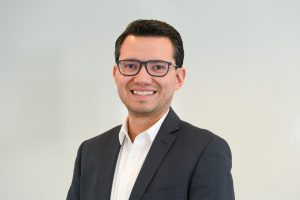 Picard Angst (PA) is an independent Swiss financial services provider, established in 2003. Based in Zurich and the UAE, the firm offers different investment solutions and takes on individual asset management mandates with its 40 investment professionals. It runs several investment strategies in the listed and alternative space, including the Food Revolution Fund, different commodity and real estate strategies and two medical technology venture capital funds.
Picard Angst (PA) is an independent Swiss financial services provider, established in 2003. Based in Zurich and the UAE, the firm offers different investment solutions and takes on individual asset management mandates with its 40 investment professionals. It runs several investment strategies in the listed and alternative space, including the Food Revolution Fund, different commodity and real estate strategies and two medical technology venture capital funds. 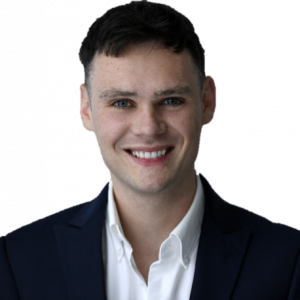 Chris Foster joined Liontrust in April 2017 as part of the acquisition of Alliance Trust Investments (ATI). Chris had initially joined ATI through the management training programme after graduating with a First Class Honours degree in Economics and Mathematics from the University of Edinburgh. Chris is a CFA Charterholder. Chris has ten years’ industry experience and has been part of the Liontrust Sustainable Investment team for eight years.
Chris Foster joined Liontrust in April 2017 as part of the acquisition of Alliance Trust Investments (ATI). Chris had initially joined ATI through the management training programme after graduating with a First Class Honours degree in Economics and Mathematics from the University of Edinburgh. Chris is a CFA Charterholder. Chris has ten years’ industry experience and has been part of the Liontrust Sustainable Investment team for eight years.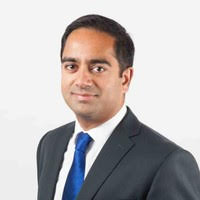 Sanjiv Tumkur joined Rathbone Investment Management in 2016 as Head of Equity Research, becoming Head of Equities in 2022. He is responsible for developing and promoting
Sanjiv Tumkur joined Rathbone Investment Management in 2016 as Head of Equity Research, becoming Head of Equities in 2022. He is responsible for developing and promoting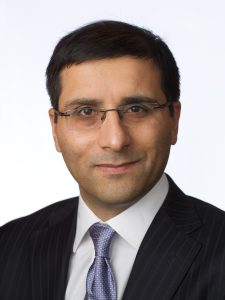 Suhail Arain is head of portfolio management for the Americas. He joined Pyrford in 2008 as a portfolio manager covering North American equities having previously worked at Scottish Widows as a global equities portfolio manager and research analyst. He has more than 25 years’ experience in the asset management industry with a particular emphasis on US and
Suhail Arain is head of portfolio management for the Americas. He joined Pyrford in 2008 as a portfolio manager covering North American equities having previously worked at Scottish Widows as a global equities portfolio manager and research analyst. He has more than 25 years’ experience in the asset management industry with a particular emphasis on US and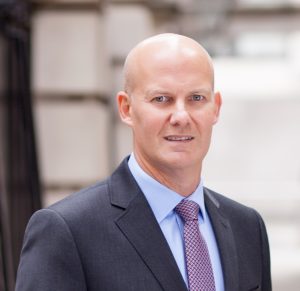 David Shaw is co-head of global equities at AXA Investment Management. He also manages the Global Sustainable Distribution Fund, co-manages the Global Sustainable Managed Fund and is deputy on the American Growth fund. He joined AXA in 2016 from Aerion Fund Management (2000-2016). Before this he worked at NPI, NatWest Investment Management and United Friendly Asset Management. He was educated at City University and has a BSc (Hons), Electronic Engineering.
David Shaw is co-head of global equities at AXA Investment Management. He also manages the Global Sustainable Distribution Fund, co-manages the Global Sustainable Managed Fund and is deputy on the American Growth fund. He joined AXA in 2016 from Aerion Fund Management (2000-2016). Before this he worked at NPI, NatWest Investment Management and United Friendly Asset Management. He was educated at City University and has a BSc (Hons), Electronic Engineering.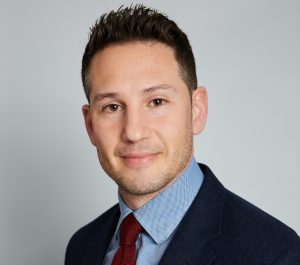 Dani Saurymper is the Portfolio Manager in Pacific’s Longevity and Social Change team. Prior to joining PAM in July 2021, Dani worked at AXA where he was Portfolio Manager of the AXA Framlington Longevity Economy fund. He was also Portfolio Manager of the AXA Framlington Health Fund and research lead for Health, Ageing & Lifestyle at AXA Framlington. Dani has over 20 years experience in the Healthcare sector.
Dani Saurymper is the Portfolio Manager in Pacific’s Longevity and Social Change team. Prior to joining PAM in July 2021, Dani worked at AXA where he was Portfolio Manager of the AXA Framlington Longevity Economy fund. He was also Portfolio Manager of the AXA Framlington Health Fund and research lead for Health, Ageing & Lifestyle at AXA Framlington. Dani has over 20 years experience in the Healthcare sector.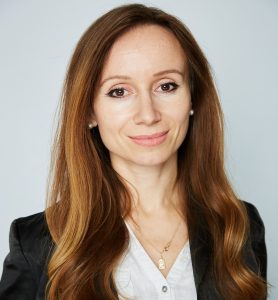 Julia Varesko is a Senior Analyst in Pacific’s Longevity and Social Change Team. Prior to joining PAM in September 2021, Julia was a senior analyst covering diversified financials at JP Morgan. She has also held roles at Elsworthy Capital and Berenberg Bank as well as a prior period at JP Morgan where she spent six years covering the Capital Goods sector. Julia is a CFA Charterholder and holds an MSc in Accounting and Finance from the London School of Economics and a BSc in Economics from University College London.
Julia Varesko is a Senior Analyst in Pacific’s Longevity and Social Change Team. Prior to joining PAM in September 2021, Julia was a senior analyst covering diversified financials at JP Morgan. She has also held roles at Elsworthy Capital and Berenberg Bank as well as a prior period at JP Morgan where she spent six years covering the Capital Goods sector. Julia is a CFA Charterholder and holds an MSc in Accounting and Finance from the London School of Economics and a BSc in Economics from University College London.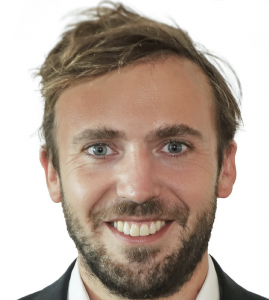 Robeco is one of Europe’s largest asset managers with more than $200 bn in assets under management. Founded in 1929, just weeks after the Wall Street Crash, by seven Rotterdam businessmen who formed a syndicate to invest people’s savings and manage money collectively, it was called the Rotterdamsch Beleggings Consortium, later shortened to Robeco.
Robeco is one of Europe’s largest asset managers with more than $200 bn in assets under management. Founded in 1929, just weeks after the Wall Street Crash, by seven Rotterdam businessmen who formed a syndicate to invest people’s savings and manage money collectively, it was called the Rotterdamsch Beleggings Consortium, later shortened to Robeco.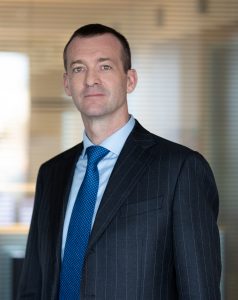 Roberto Magnatantini joined DECALIA in 2020. He is lead portfolio manager of DECALIA Silver Generation and DECALIA Eternity funds. Before joining DECALIA, Roberto was Head of Global Equities at SYZ Asset Management, where he spent 12 years managing two strategies for the OYSTER funds’ franchise. Before that, he worked four years at Lombard Odier and four years at HSBC where he managed equity funds. He is a CFA and CMT charter holder and holds a ESG certification from PRI.
Roberto Magnatantini joined DECALIA in 2020. He is lead portfolio manager of DECALIA Silver Generation and DECALIA Eternity funds. Before joining DECALIA, Roberto was Head of Global Equities at SYZ Asset Management, where he spent 12 years managing two strategies for the OYSTER funds’ franchise. Before that, he worked four years at Lombard Odier and four years at HSBC where he managed equity funds. He is a CFA and CMT charter holder and holds a ESG certification from PRI. Klaus Ingemann, co-CIO, joined AB in 2014 as Portfolio Manager and Senior Research Analyst and was promoted to Co-Chief Investment Officer of Global Core Equity in 2018. He previously served as an executive member of the investment board at CPH Capital, which he co-founded in 2011. Prior to that, Klaus was chief portfolio manager and a member of the investment board at BankInvest. He previously worked as a corporate finance advisor for Carnegie Bank and before that, spent four years in the finance department at Tele Danmark. He holds a BSc in business administration and an MSc in finance and accounting from the Copenhagen Business School and is a CFA charterholder.
Klaus Ingemann, co-CIO, joined AB in 2014 as Portfolio Manager and Senior Research Analyst and was promoted to Co-Chief Investment Officer of Global Core Equity in 2018. He previously served as an executive member of the investment board at CPH Capital, which he co-founded in 2011. Prior to that, Klaus was chief portfolio manager and a member of the investment board at BankInvest. He previously worked as a corporate finance advisor for Carnegie Bank and before that, spent four years in the finance department at Tele Danmark. He holds a BSc in business administration and an MSc in finance and accounting from the Copenhagen Business School and is a CFA charterholder.